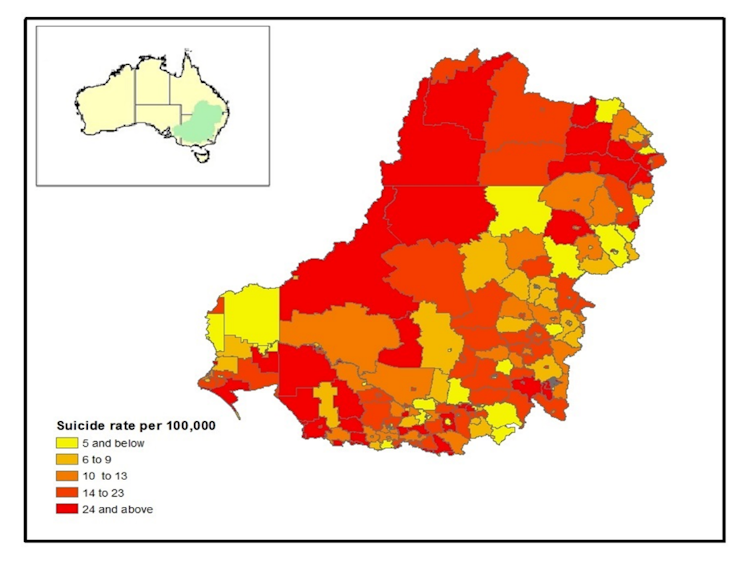Suicide rates jumped after extreme drought in the Murray-Darling Basin – we have to do better as climate change intensifies
- Written by Sarah Ann Wheeler, Professor in Water Economics, University of Adelaide

The impact on mental health of weather extremes[1] such as drought is a growing concern due to climate change.
Rural communities feel the impact of drought much more than urban residents. Our new research[2] looks at the link between drought and suicide rates in one of Australia’s biggest farming areas, the Murray-Darling Basin.
Drawing on monthly data from 2006 to 2016, our findings were alarming. We found, for instance, that one more month of extreme drought in the previous 12 months was strongly associated with a 32% increase in monthly suicide rates.
Climate change is predicted[3] to bring more heat and longer, more extreme droughts[4]. More effective approaches will be needed to prevent suicides in affected regions.
Read more: Drought increases rural suicide, and climate change will make drought worse[5]
Drought hits rural areas hardest
Droughts induce post-traumatic stress disorder, anxiety and depression[6]. Hotter temperatures can also reduce levels of the brain chemical serotonin[7]. This has negative effects on the central nervous system and moods[8].
In Australia, suicide is a leading cause of death[9] – especially for people aged 18-44. And the suicide rate in remote areas is almost double that of major cities[10]. This is because drought can:
Research overseas[11] found suicide rates rise with higher average temperatures. In Australia, a study found some evidence linking drought and suicide[12] in New South Wales. However, a Victorian study[13] found no significant association.

















